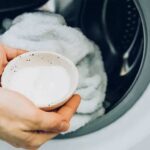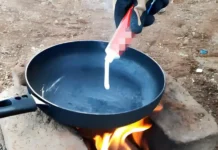Removing super glue is no easy feat, but it’s not impossible. Here’s how to remove or clean super glue stains, as advised by a cleaning expert.
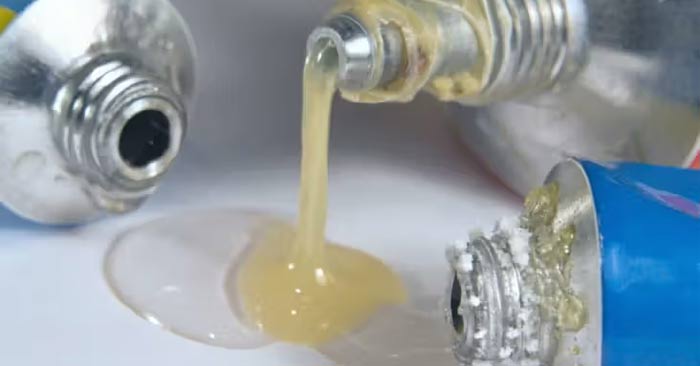
Super glue is a “miracle worker” for quick fixes on broken or cracked items. However, anyone who’s used it knows how challenging it is to remove when accidentally spilled.
“Super glue is incredibly tough to remove due to its extreme durability,” explains Guy Peters, owner and founder of Mop Stars cleaning company. “A 1-inch square piece can hold over a ton of weight!” With such strength, it’s no surprise removal can be daunting.
Fortunately, there are safe and effective methods to remove super glue from most surfaces.
Essential Tips for Removing Super Glue on Any Material
How Does Super Glue Work?
The primary reason super glue is hard to remove is its rapid drying time. Unlike other adhesives, which take minutes to bond, super glue creates a strong hold in seconds.
This chemical reaction requires only a bit of moisture. Since moisture is everywhere (on hands, surfaces, even in the air), the glue bonds almost instantly. That’s why solvents or special techniques are needed to remove it.
How to Remove Super Glue?
Acetone, commonly used for nail polish and residue removal, is also effective for dissolving super glue. However, it’s not always the best choice.
If not careful, you might cause more damage than intended. While acetone is great for super glue, it can strip finishes from wood, dissolve paint, melt plastic, and damage fabrics. Plus, it’s highly flammable, so caution is essential.
The best removal method depends on the surface. Here are common products for removing glue stains:
- Acetone
- Nail polish remover
- Rubbing alcohol
- Hand sanitizer
- Sandpaper
- White vinegar
- Soapy water (for skin)
- Olive oil (best for skin or small amounts)
- Kerosene
- Nitromethane
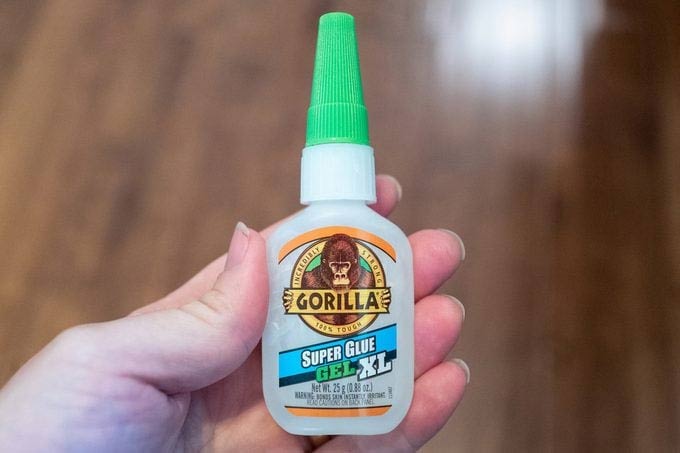
Removing Super Glue from Skin
According to Original Super Glue, the best method is soap and water.
- Apply warm, soapy water to the affected area. Soap helps weaken the bond, but patience is key.
- Gently rub the area with a sponge or washcloth, using light pressure.
- Continue until the glue gradually peels off. Be cautious with large glue patches to avoid skin irritation.
Removing Super Glue from Glass
- Saturate a cotton ball or cloth with acetone, nail polish remover, or rubbing alcohol.
- Rub in small circles with firm pressure.
- If glue doesn’t come off immediately, let the solvent sit for a few minutes.
- Repeat if necessary.
Removing Super Glue from Plastic
According to Peters, plastic is one of the toughest materials for super glue removal. Solvents strong enough to remove glue can also dissolve or damage plastic. For hard plastic or small glue spots, a small amount of acetone may suffice.
Removing Super Glue from Plastic:
- Small stains: Dab lightly with acetone.
- Larger stains: Use nitromethane.
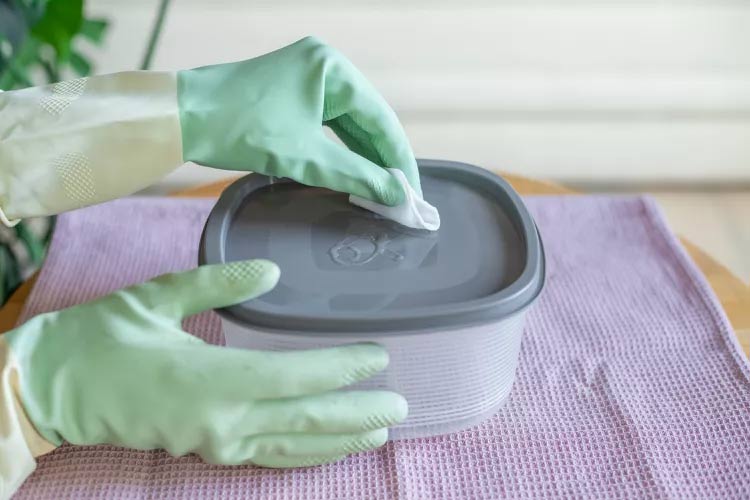
Removing Super Glue from Clothing
Acetone can be harsh on fabrics, so avoid it for clothing. Rubbing alcohol works well for cotton and polyester. Even wool can tolerate small amounts of rubbing alcohol.
For leather, consider vinegar, a milder yet effective option. It may take longer and require more effort, but it works.
Removing Super Glue from Upholstery and Carpets
Removing super glue from upholstery depends on the fabric type, but generally, avoid acetone. It can strip color from fabrics and carpets, causing stains.
Rubbing alcohol is a safer choice. It’s ideal for upholstery and most carpets. Always test in an inconspicuous area first.
Removing Super Glue from Metal
Metal is one of the easiest materials for super glue removal, as it withstands acetone without damage. Just be careful not to spread glue to nearby surfaces.
Caring for Your Child’s Ao Dai: Expert Washing and Preservation Tips
The ao dai, a quintessential Vietnamese garment, is meticulously crafted from a diverse range of fabrics, offering both elegance and comfort. From luxurious silks to breathable cottons, each material is carefully selected to ensure the perfect blend of style and practicality. Whether for special occasions or everyday wear, the ao dai’s versatility makes it a timeless choice for all.




























